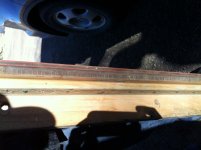Hi, I have a 10X5 Snooker table.
I am trying to locate a set of 2-1/16 solids/stripes set of pool balls so we can play 8 and 9 ball on our snooker table.
I am able to find 2-1/8" balls at a few local shops.
I have also found some 2-1/16" "pool balls" for purchase from Europe and Austrailia.
I am hesitant to order anything from overseas, for fear that the balls might indeed show up as 2-1/8"
Does anyone know if there are actually 2-1/16 inch balls compared to 2-1/8"
Thanks in advance,
Keith
I am trying to locate a set of 2-1/16 solids/stripes set of pool balls so we can play 8 and 9 ball on our snooker table.
I am able to find 2-1/8" balls at a few local shops.
I have also found some 2-1/16" "pool balls" for purchase from Europe and Austrailia.
I am hesitant to order anything from overseas, for fear that the balls might indeed show up as 2-1/8"
Does anyone know if there are actually 2-1/16 inch balls compared to 2-1/8"
Thanks in advance,
Keith
